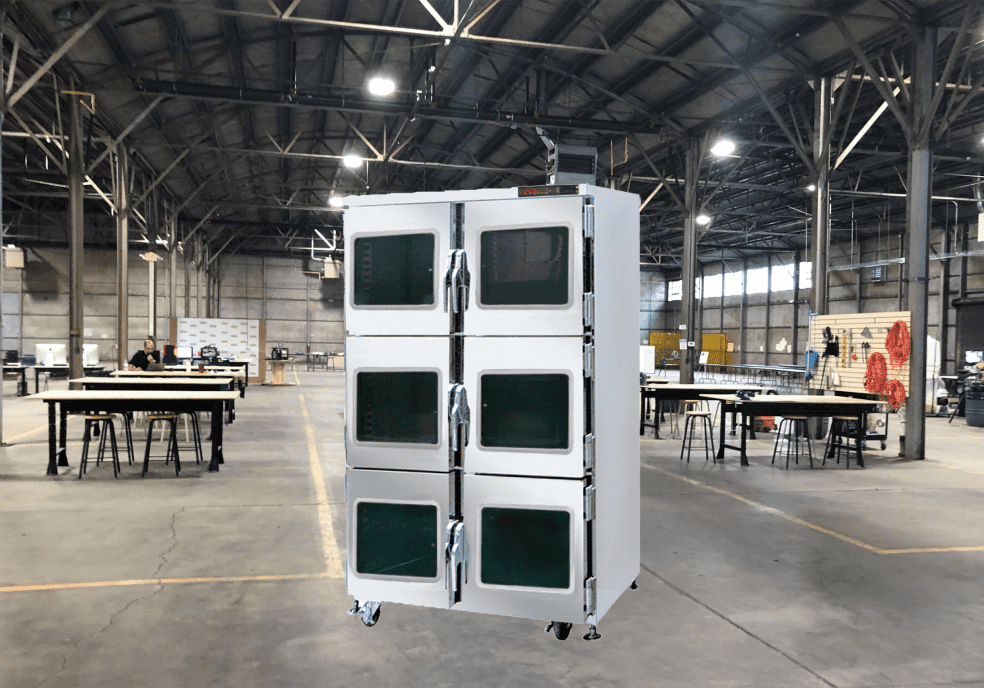Essential Guide to Industrial Dry Cabinets for Optimal Equipment Protection

industrial dry cabinets
Industrial dry cabinets play a crucial role in environments where humidity control is essential to protect sensitive equipment and materials. These cabinets are designed to maintain a stable, low-humidity environment to prevent damage caused by moisture. For industries such as electronics, pharmaceuticals, and optics, controlling humidity can be the difference between functional and malfunctioning equipment. This guide explores what industrial dry cabinets are, why they are important, and how to choose the right one for your needs.
What is an Industrial Dry Cabinet?
Definition and Purpose
Industrial dry cabinets are specialized storage units engineered to maintain a consistent, low-humidity environment. They are used to protect sensitive materials and equipment that are susceptible to damage from moisture. By controlling the relative humidity inside the cabinet, these units help prevent corrosion, mold growth, and other moisture-related issues that can compromise the integrity and performance of stored items.
Key Features and Components
Industrial dry cabinets typically feature advanced humidity control systems, including dehumidifiers and moisture-absorbing materials. Most models come with a digital display to monitor and adjust humidity levels precisely. They also often include shelves or drawers to organize items effectively. High-quality cabinets may have additional features such as temperature control, air filtration, and alarms to alert users of any deviations from the set conditions.
Why Use Industrial Dry Cabinets?
Benefits of Humidity Control
Maintaining a stable, low-humidity environment offers several advantages. It helps prevent rust and corrosion on metal components, which is crucial for machinery and electronic parts. In industries like pharmaceuticals, it preserves the potency and safety of sensitive compounds. For optical and precision instruments, controlled humidity ensures accurate performance and longevity. Overall, proper humidity control extends the lifespan of valuable equipment and reduces maintenance costs.
Protection for Sensitive Equipment and Materials
Sensitive items such as electronic components, medical devices, and optical lenses are highly vulnerable to moisture damage. Industrial dry cabinets safeguard these materials from humidity-induced problems like short circuits, degradation, or contamination. By keeping these items in a controlled environment, businesses can ensure that their equipment operates reliably and maintains high performance, which is essential for both safety and productivity.
Types of Industrial Dry Cabinets
Standard Dry Cabinets
Standard dry cabinets are designed to maintain a specific humidity level suitable for general industrial applications. They are widely used for storing electronic components, tools, and other equipment that require protection from humidity. These cabinets are typically equipped with basic humidity control features and are suitable for a range of industries.
Low-Humidity Dry Cabinets
Low-humidity dry cabinets are built to achieve and maintain extremely low humidity levels, often below 5% relative humidity. These cabinets are used in highly sensitive environments, such as semiconductor manufacturing or high-precision optical equipment storage. They offer advanced humidity control mechanisms and often come with additional features to ensure the most stringent conditions are met.
Customized Dry Cabinets
Customized dry cabinets are tailored to meet specific needs of particular industries or applications. They can be designed to include specialized features such as customized shelving, unique size requirements, or additional environmental controls like temperature regulation. Customization allows businesses to address unique challenges and ensure their dry cabinet precisely meets their operational requirements.
How Industrial Dry Cabinets Work
Humidity Control Mechanisms
Industrial dry cabinets use various methods to control humidity levels. Most cabinets feature a built-in dehumidifier that actively removes moisture from the air. Additionally, some models use desiccant materials that absorb moisture. These mechanisms work together to keep the internal environment stable, ensuring that stored items remain protected.
Temperature Regulation Features
In addition to humidity control, many industrial dry cabinets offer temperature regulation features. Maintaining a consistent temperature is important for many sensitive items, as fluctuations can affect their performance and longevity. Temperature control is often integrated into the humidity control system, allowing users to set and monitor both humidity and temperature levels.
Maintenance and Care
Regular maintenance is essential to ensure that an industrial dry cabinet operates efficiently. This includes checking and replacing dehumidifier filters, inspecting desiccant materials, and calibrating humidity and temperature sensors. Routine cleaning and ensuring that seals and gaskets are in good condition also help maintain optimal performance and extend the lifespan of the cabinet.
Applications of Industrial Dry Cabinets
Electronics and Semiconductor Industries
In the electronics and semiconductor industries, industrial dry cabinets are used to protect sensitive components from moisture that could cause short circuits or degrade performance. These cabinets ensure that electronic parts remain in optimal condition throughout manufacturing, testing, and storage processes.
Pharmaceutical and Medical Sectors
Pharmaceutical and medical industries require stringent humidity control to preserve the efficacy and safety of drugs and medical devices. Industrial dry cabinets are used to store medications, vaccines, and sensitive equipment, ensuring that they remain effective and safe for use.
Optical and Precision Equipment
For optical and precision equipment, such as lenses and cameras, controlling humidity is crucial to prevent damage from condensation and corrosion. Industrial dry cabinets help maintain the accuracy and longevity of these high-value items by providing a stable environment that minimizes the risk of moisture-related issues.
Choosing the Right Industrial Dry Cabinet
Factors to Consider: Size, Capacity, Humidity Range
When selecting an industrial dry cabinet, it’s important to consider factors such as size, capacity, and the range of humidity levels it can achieve. The size and capacity should match the volume of items you need to store, while the humidity range must meet the specific requirements of your materials. Ensuring that the cabinet can handle your needs will maximize its effectiveness and protect your investments.
Energy Efficiency and Cost Considerations
Energy efficiency is another important factor. Look for cabinets that offer energy-saving features and low operational costs. While the initial investment might be higher, choosing an energy-efficient model can lead to savings over time. Compare costs and features to find a balance between upfront expense and long-term value.
Brand Recommendations and Reliability
Selecting a reliable brand can significantly impact the performance and durability of your dry cabinet. Research different brands and read reviews to ensure that you choose a reputable manufacturer. Reliable brands often offer better customer support, warranty options, and product quality, which can provide added peace of mind.
Common Issues and Troubleshooting
Typical Problems with Dry Cabinets
Common issues with industrial dry cabinets include fluctuations in humidity levels, mechanical failures, or problems with the dehumidifier. These issues can compromise the effectiveness of the cabinet and potentially damage stored items. Regular maintenance can help prevent many of these problems.
How to Address Common Issues
To address common issues, start by checking the humidity and temperature settings to ensure they are correctly configured. Inspect the dehumidifier and replace filters if necessary. For mechanical issues, refer to the manufacturer’s troubleshooting guide or consult a professional technician.
When to Seek Professional Help
If problems persist despite troubleshooting, it may be time to seek professional help. A qualified technician can diagnose and repair more complex issues, ensuring that your dry cabinet continues to operate effectively. Regular professional servicing can also help prevent major issues and extend the lifespan of the equipment.
Conclusion
Industrial dry cabinets are essential tools for maintaining a stable, low-humidity environment that protects sensitive equipment and materials. By understanding the various types of dry cabinets, their features, and applications, you can make informed decisions about which model best meets your needs. Proper selection, maintenance, and troubleshooting will ensure that your dry cabinet provides reliable protection and extends the life of your valuable items.





